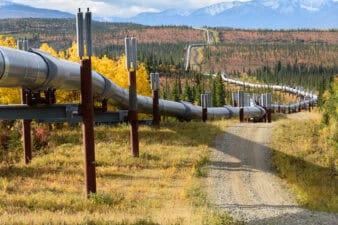In 2014, the entire oil industry collapsed. While many companies were spending as if US$100 oil prices would be the permanent norm, burgeoning supply in North America disrupted the status quo.
After bottoming at US$35 per barrel, many investors were calling for a lower-for-longer environment. Dozens of companies that were built on US$100 per barrel oil prices went bankrupt. Others scrambled for cash, only drilling in areas with extremely low production costs.
The true balance of the market, it seems, was in the middle. Since the end of 2014, oil prices have averaged roughly US$60 per barrel, roughly where they are today.
Some companies are still struggling to turn a profit at current prices. Husky Energy (TSX:HSE), however, has figured out how to capitalize. Here’s how the company is succeeding.
A bounce-back quarter
Husky is doing very well on paper these days. On the company’s latest quarterly conference call, investors got more details into the strength of the underlying businesses.
In the first quarter, Husky generated funds from operations (a loose metric of cash flow) of $959 million. Free cash flow (a better metric) was $147 million. Annualized, free cash flow would be nearly $600 million.
With a market cap of $13.5 billion, shares trade at a hypothetical 22.5 times free cash flow. That’s a 4.4% free cash flow yield — not a bargain by any means, but certainly impressive given the pressures Husky faced last quarter.
The biggest tailwind was rising oil prices. During the quarter, market prices improved from $41 per barrel to $47 per barrel. It’s important to note that Canadian heavy crude prices still traded at a $5 discount. This reflects the poorer quality of the oil as well as prevailing transportation bottlenecks.
Still, Husky was able to generate respectable levels of free cash flow. That’s important considering the company is still spending plenty on capital expenditures to upgrade its infrastructure.
That leads us to Husky’s greatest asset of all: refineries.
Refineries are leading the way
Last quarter, Husky was able to generate positive free cash flow despite falling production.
Average quarterly production fell to 285,200 barrels per day, down from 300,400 barrels per day the year before. Don’t blame Husky, though, as this was mostly due to mandatory production cuts across all of Alberta.
Husky’s secret was its refinery business.
Refineries earn money based on a metric termed the “crack spread.” This is the pricing difference between raw and processed oil. It’s basically the profit refineries make from turning new oil into useable petroleum products.
Having a refinery business is a huge advantage, as it offsets volatility in commodity prices. As oil prices fall, crack spreads often widen. If you own a refinery business, these profits can reduce the impact of falling revenues from your oil production.
Last quarter, Husky’s CEO believed the “largest benefit was from U.S. refining margins.”
“This further demonstrates the value of our Integrated Corridor business,” he said. “We can capture value at any point along the Upstream-Downstream chain, resulting in global pricing for most of our production.”
Diversified oil stocks are key
While you may be tempted to pick up pure-play oil producers as prices continue to climb, the advantages of a diversified business cannot be overstated. With Husky, investors get the benefit from low-cost oil production as well as the cushion of refinery profits.
Stocks like Husky are proving they can capitalize in any pricing environment.






